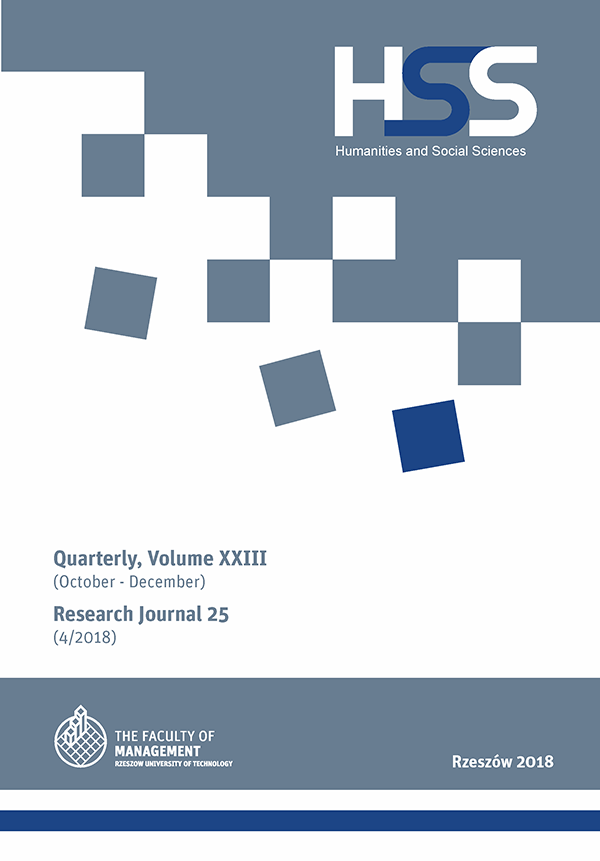Abstract
The development of the network has irreversibly changed people's lives and non-users from the network is considered to be digitally excluded. The term digital divide is defined as: inequalities in an access to the Internet, the intensity of its use, knowledge of how to search for information, the quality of connection and social support to help in using the Internet, as well as inequalities in the ability to assess the quality of information and the diversity of the use of the network. The authors of this article will present the results of a sociological survey, the issues of which concerned the availability of Internet in homes. The analysis focuses on two dimensions of the lack of access to the network: social and spatial. The study was conducted in 2009 on a random sample of 727 adult residents of Rzeszów and municipalities bordering the city. The sample was successfully selected thanks to the help of employees of the Podkarpackie Voivodship Office in Rzeszów. In order to obtain the most reliable results during the sampling, the respondents were subjected to the place of residence, so that the research would cover the residents of all Rzeszów settlements and towns bordering the city administratively to neighboring municipalities.
References
Batorski D., Polacy wobec technologii cyfrowych – uwarunkowania dostępności i sposobów korzystania. Diagnoza Społeczna 2013. Warunki i jakość życia Polaków – Raport, „Contemporary Economics” 7/2013, p. 317–341.
Gogołek W., Ulotne swobody informacyjne społeczeństwa informacyjnego, „Studia Medioznawcze” nr 4 (31) 2007.
Jawłowska A., Kierunki zmiany kulturowej i jej konsekwencje społeczne [In:] A. Rychard, M. Federowicz (ed.), Społeczeństwo w transformacji: ekspertyzy i studia, Warszawa 1993, p. 186–200.
Kinal M., Nowe media w pracy nauczyciela edukacji przedszkolnej i wczesnoszkolnej, Stowarzyszenie Naukowe Przestrzeń Społeczna i Środowisko, Rzeszów 2015.
Kotarski H., Malicki K., Palak M., Pirog K., Rzeszowska diagnoza społeczna 2015, Rzeszów 2016.
Palak M., Kinal J., Poza siecią. Problem społecznego i przestrzennego zróżnicowania dostępu do Internetu w Polskim mieście [In:] M. Malikowski, M. Palak, J. Halik, (ed.), Zmiany w przestrzeni współczesnych miast, Rzeszów 2015, s. 146.
Tadeusiewicz R. Społeczność Internetu, Warszawa 2002.
INTERNET SOURCES
Budek K., 2012, Polska wieś stawia na Internet mobilny. http://www.internetstandard.pl/news/381998/Polska.wies.stawia.na.Internet.mobilny.html
Drewis M., 2013, Cyfrowe wykluczenie – czym jest i kto kogo wyklucza?, http://antyweb.pl/cyfrowe-wykluczenie-czym-jest-i-kto-kogo-wyklucza/
Watkins C.S., 2012, Digital Divide: Navigating the Digital Edge, https://moody.utexas.edu/sites/ default/files/watkins_1.pdf
Wawrzyn M., 2013, Polscy internauci policzeni i zmierzeni. Cyfrowe wykluczenie jest w naszym kraju faktem. http://internet.gadzetomania.pl/2013/11/06/polscy-internauci-policzeni-i-zmierzeni-cyfrowe-wykluczenie-jest-w-naszym-kraju-faktem

